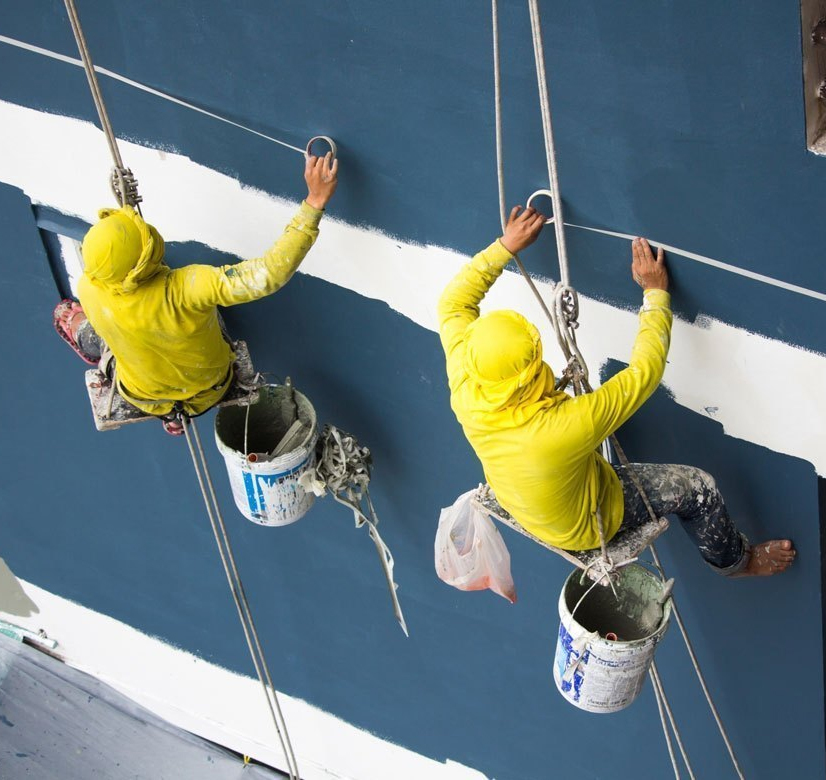Understanding Commercial Painting Services
Commercial painting services involve specialized painting solutions for business and industrial properties, focusing on enhancing aesthetics, durability, and functionality. Unlike residential painting, commercial projects often require larger-scale planning, higher-grade materials, and adherence to safety regulations. Offices, retail stores, warehouses, schools, hospitals, and hotels can all benefit from professional painting services. A well-executed paint job can significantly impact the perception of clients, visitors, and employees, reflecting professionalism and attention to detail. Commercial painters bring experience in handling complex surfaces, high ceilings, and large exterior facades. They also understand the importance of minimal disruption, often working during off-hours to keep business operations running smoothly. Choosing a professional service ensures that the painting project is completed efficiently, safely, and with long-lasting results.
Benefits of Hiring Professional Commercial Painters
Investing in commercial painting services goes beyond aesthetics; it directly affects property value, functionality, and employee satisfaction. A fresh coat of paint can dramatically enhance curb appeal, attracting potential clients and tenants. Inside the workplace, colors can influence mood and productivity, making employees feel more energized and focused. Professional painters use high-quality paints and materials that resist fading, chipping, and peeling, reducing long-term maintenance costs. They also ensure surfaces are properly prepared and repaired, which prevents future issues like water damage or mold growth. By hiring experts, businesses save time and effort while avoiding common pitfalls associated with DIY painting. Overall, professional painting services provide a polished, cohesive look that communicates quality and reliability to everyone who enters the space.
Popular Commercial Painting Techniques and Finishes
Commercial painting services utilize various techniques and finishes tailored to specific property needs. Interior painting often includes walls, ceilings, doors, and specialty surfaces such as textured or patterned finishes. Exterior painting focuses on durability, using weather-resistant coatings to protect buildings from sun, rain, and environmental pollutants. Specialty coatings like epoxy, fire-resistant paints, or anti-graffiti finishes are often applied in warehouses, schools, or public areas. Eco-friendly and low-VOC paints are increasingly popular, offering safer environments for employees and clients while reducing environmental impact. Color selection is also crucial, as the right hues can enhance brand identity and create a welcoming atmosphere. Professional painters combine technical expertise with creative insight to deliver results that are both visually striking and long-lasting.
The Commercial Painting Process Explained
A successful commercial painting project begins with a thorough consultation to assess the space, understand client preferences, and recommend suitable paint options. Color consultation is often offered, helping businesses choose shades that complement branding, lighting, and architectural features. Surface preparation is critical, including cleaning, sanding, patching, and priming, which ensures paint adheres properly and lasts longer. Once preparation is complete, skilled painters apply coats using techniques optimized for smoothness and coverage. Multiple layers may be applied depending on the surface and type of paint used. After the painting is finished, an inspection ensures uniformity, proper finish, and attention to detail. The process concludes with cleanup and removal of debris, leaving the property ready for immediate use.
Choosing the Right Commercial Painting Company
Selecting the right commercial painting service requires careful consideration of experience, expertise, and reliability. It is essential to review portfolios and testimonials to evaluate the quality of previous projects. Key questions to ask include the company’s approach to safety, adherence to timelines, and paint product recommendations. Certifications and insurance coverage provide assurance of professionalism and protection against potential liabilities. Warranties and guarantees offer peace of mind, ensuring that any issues after completion are addressed promptly. Communication and responsiveness are also important; the company should be transparent about pricing, schedules, and potential challenges. A well-chosen painting contractor ensures a smooth process, minimal disruption, and superior results.
Cost Considerations for Commercial Painting Services
The cost of commercial painting services varies depending on several factors, including project size, surface condition, paint type, and location. Larger buildings require more labor, equipment, and materials, which can affect the overall budget. Complex projects with specialized coatings or high-access areas may involve additional charges. Material quality also influences cost; premium paints and finishes last longer and often provide better coverage. Businesses should obtain detailed estimates that outline labor, materials, and any extra charges. Budgeting strategically helps prevent overspending while maintaining high standards. Transparency and a clear breakdown of costs are crucial to avoid surprises during or after the project.
Maintenance Tips for Painted Commercial Spaces
Maintaining painted surfaces prolongs their lifespan and keeps spaces looking fresh and professional. Regular cleaning with gentle solutions prevents dirt buildup and stains, especially in high-traffic areas. Inspecting walls and exteriors periodically helps detect issues such as cracks, peeling, or water damage early. Touch-ups and minor repairs should be conducted promptly to prevent larger problems. For exterior surfaces, protective measures like sealing and weatherproof coatings can prevent environmental damage. Encouraging employees to handle surfaces carefully and avoid unnecessary wear also contributes to longevity. Proper maintenance reduces the need for frequent repainting, saving both time and money over the long term.
Frequently Asked Questions (FAQ)
- How long does a typical commercial painting project take? Commercial painting timelines vary based on size and complexity, but most projects can be completed within a few days to several weeks.
- Can painting be scheduled outside of business hours? Yes, many painting services offer night or weekend schedules to minimize disruption to business operations.
- What types of paint are best for high-traffic commercial spaces? Durable, washable paints and epoxy coatings are ideal for areas that experience heavy use.
- How often should commercial buildings be repainted? Generally, every 5–10 years for interiors and 5–7 years for exteriors, depending on exposure and wear.
- Are eco-friendly paints worth the extra cost? Eco-friendly paints provide health and environmental benefits and can be a worthwhile investment for safe indoor environments.
Takeaway
Professional commercial painting services transform business spaces, creating environments that are visually appealing, durable, and reflective of brand identity. From expert surface preparation to high-quality finishes, every step enhances the overall value and functionality of the property. By choosing experienced painters, businesses enjoy reduced maintenance costs, improved aesthetics, and a polished impression on clients and employees. With careful planning, the right materials, and ongoing maintenance, commercial painting projects can deliver long-lasting results that elevate both the look and performance of any commercial property.






